

Loading



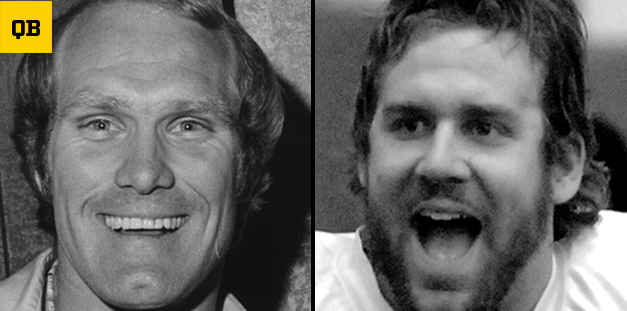
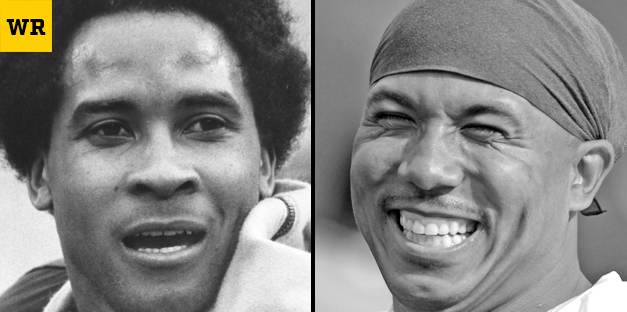
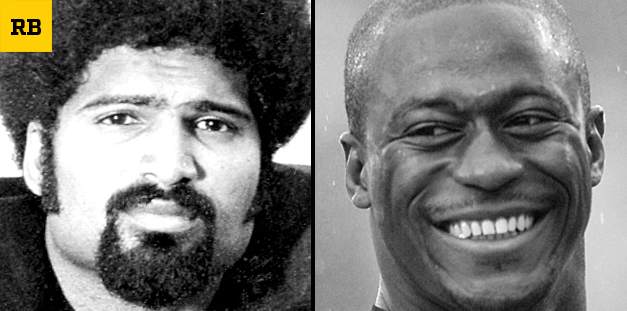
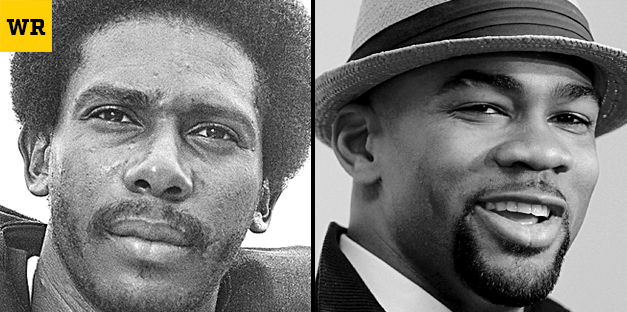
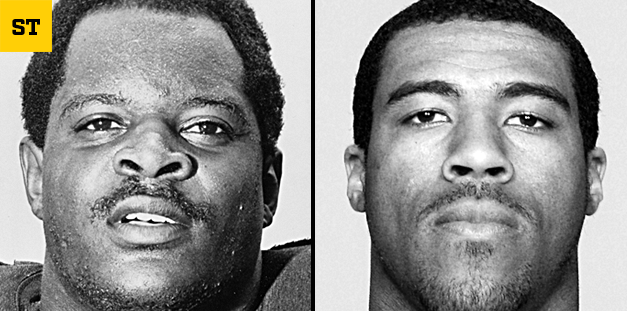
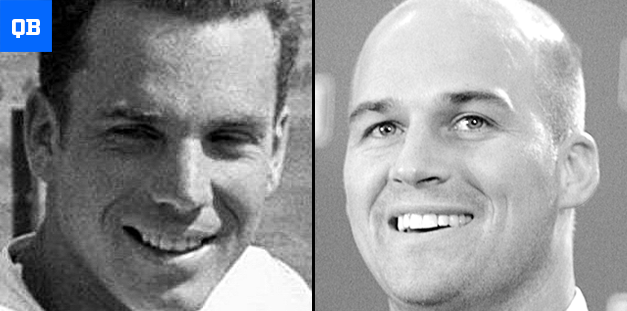
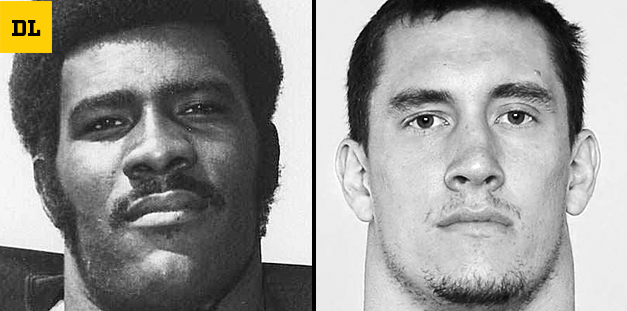

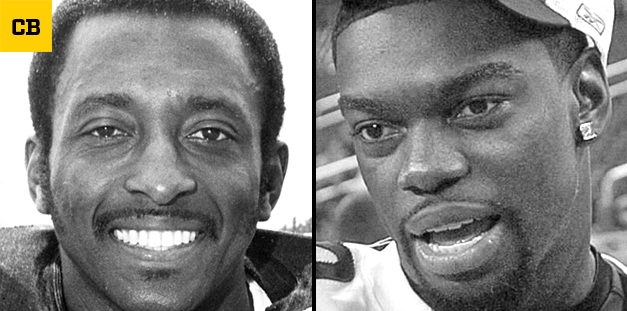
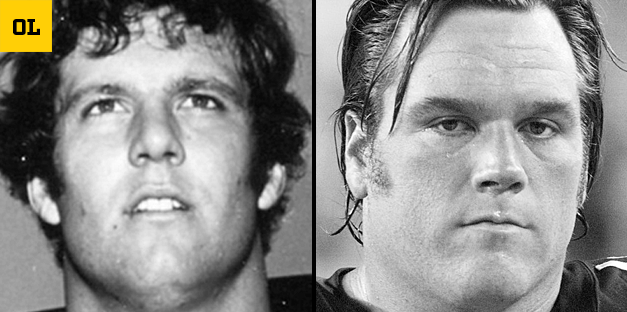
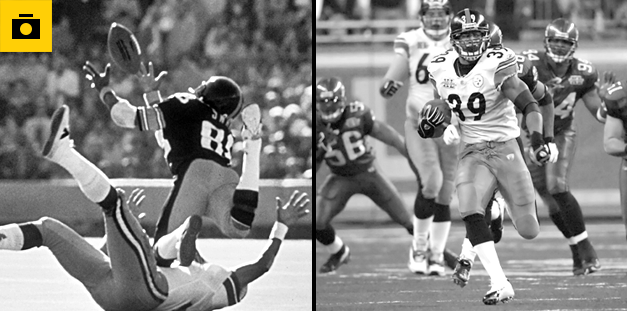
The news started a chain reaction. One cell phone buzzed, then another, then another, until it was speeding from one 1970s Steeler to the next like wildfire, threatening to strip them down further to the bone.
This time, they were praying for Gordon Gravelle, electronically holding hands across the country. He was lying in an Oakland, Calif., area hospital bed, fighting for his life just days after Thanksgiving. The former starting right tackle had spent much of his retirement from football on the operating table, trying to reconstruct his broken body. The latest surgery, a fusion of three vertebrae, had put him under such stress that he would go into cardiac arrest 10 days later. Now, induced hypothermia was the only thing keeping his heart beating.
Franco Harris hadn’t seen Gravelle since former Steelers coach Chuck Noll’s funeral in the summer of 2014. When Harris received the text blast from John Banaszak, he happened to be in San Francisco. Harris and Gravelle weren’t close in the traditional sense, but that day, he sent a text message to Gravelle’s wife, Molly, to ask if he could see him. She said the doctors would allow it — this was Franco Harris, after all — and so he ordered a taxi.
During the drive across the bay, Harris’ mind wandered to the nine men who had left their brotherhood too early. Great guys, he thought, all of them. LC Greenwood, Ernie Holmes, Dwight White, three-fourths of the Steel Curtain front. Mike Webster, the Hall of Fame center whose sad story was about to become the world’s to experience in a major motion picture. They were all great guys to Harris, and Gravelle was one more, cut from the same cloth, suddenly up against it.
“I think all of us reflect on it,” Harris, 65, would say later. “We’re all in our fourth quarter now.”
Forty years have passed since Gravelle, Harris and their teammates won Super Bowl X, 21-17, against the Dallas Cowboys in Miami’s Orange Bowl. There’s a new anniversary every year it seems, a chance to honor what they left behind for a city that would grow into a Steeler Nation. Each player who wore the black and gold after them would exist under their immense shadow — until the 2005 season, when 53 much younger men emerged from it by winning Super Bowl XL, 21-10, over the Seattle Seahawks at Detroit’s Ford Field.
“When you walk through that building, you see the four Lombardi trophies, you see all the great players come back, see them on the sideline, and you think, ‘Man, I want to be a part of that,’ ” said Hines Ward, 39, the Most Valuable Player of Super Bowl XL. “You never really felt like we were part of the Steelers organization because we hadn’t won a Super Bowl. You finally felt like you got that validation.”
Thirty years separate two crowning achievements of Pittsburgh’s defining brand, and the players who came together to make the moments represent vastly different eras of our nation’s new pastime. They form two natural cohorts through which to assess and compare players’ post-NFL life at near-opposite points on the retirement spectrum.
The men who won the franchise its long-elusive “one for the thumb” are in the second quarter to Harris’ fourth. It is too early to know what the future holds for their health, but, hearing the stories of former players like Gravelle’s, they are fearful of what’s to come. Some can already notice a decline, their cognitive abilities dented like a game-worn helmet.
Having freshly hung up their cleats, they are on daddy duty for the first time. Many live in big houses, and if they were smart with their money, they won’t ever have the pressure to earn another paycheck — a stark contrast to their 1970s brethren, who had no choice but to pursue “their life’s work,” as their head coach liked to say.
Most of Chuck Noll’s Steelers had jobs during the offseason. They showed up to training camp excited to play football again but also to start collecting a salary. They relished their Super Bowl triumphs but also their big-game bonuses. They were not paid or given adequate labor rights like valued commodities, yet they were asked to play a game that was far more barbaric than today’s concussion-conscious, damage-controlled version.
Even before his cardiac arrest on Thanksgiving Day, Gravelle had been struggling with his memory. When Harris arrived at the hospital that night, Gravelle was awake, freed from his coma, but he wasn’t really there. Harris talked to him still, telling him it was good to see him and recounting some of their glory days. Just Harris’ presence meant everything to Molly Gravelle, who had received texts and calls from so many of their Steeler friends. Gravelle wouldn’t remember that Harris had visited, but he still felt the significance. It got him all choked up.
So here was a 66-year-old man, brought back from the dead, with a new appreciation for just how deep the bonds were. But the arthritis in every joint remained, and the truth was, there was always going to be another surgery.
“I chose to play the game. I know what I bought into,” Gravelle said later, by phone from his home in Danville, Calif., as his wife nursed him through his recovery. “I bought into this whole thing, and I can’t blame anybody else but myself for doing it. I played eight years. I got a lot out of it, but it took a lot out of me.”
Some had been luckier and could summon a spring in their step. But for every Franco Harris, who has been proactively fighting against potential brain damage for 15 years by eating blueberries and taking fish oil supplements, there is a Reggie Harrison (who changed his name to Kamal Salaam-El), a fellow running back who claims he was “beast mode before there was beast mode” and today moves around his home in a motorized scooter.
In the first decade after his career ended, Salaam-El walked in Webster’s shoes. He was suicidal, violent, and would later be diagnosed with post-traumatic stress disorder, like a combat veteran.
“I feel like it was worth it,” Salaam-El, 65, said. “Now, nobody ever told me that my head would be as screwed up as it is, by taking all the pounding. As a matter of fact, I was told that Riddell helmet would absorb anything. But I would rather be the way that I am now, doing something that I always wanted to do, than be walking around in a little better condition, never having achieved what I have achieved. I played the game on the greatest team known to football.”
Gravelle loves to tell a story: A few years ago, he ran into legendary San Francisco 49ers coach Bill Walsh at a golf outing. Gravelle introduced himself. Walsh recalled that the large man standing in front of him was a 1970s Steeler, poked him playfully in the chest and said, “Best team ever.”
For all the guys, reminders like that serve as the gain that accompanies the pain.
“It has come to my mind many times,” said Joe Greene, 69, the Steelers Hall of Fame defensive tackle from the 1970s, “would I substitute the money that these guys are making today for my experience? The guys I played with and the championships that we won? The answer every time is no, no, no.”
Greene returned to the Steelers in 2003 to work in the player personnel department. He watched from up close as the franchise — led by coach Bill Cowher, second-year quarterback Ben Roethlisberger and a dominant defense — captured the Lombardi Trophy for the fifth time. And, to be honest, he didn’t think this modern group of guys covered in confetti could have the camaraderie he and his teammates had. They were too transient, the culture of the locker room more business-like with free agency, and the way they called attention to themselves on the field after individual exploits made him queasy.
A decade later, as Greene walked through the doors of the Pro Football Hall of Fame last August for the induction of Jerome Bettis — the first of what will likely be another wave of Steeler members from the 2000s — his opinion hadn’t changed. It couldn’t be the same. There was just no way.
Two eras, one shared sacrifice
Andy Russell’s first big break in professional football is burned into his memory. It came in 1963, his rookie year, in the Steelers’ season-opener at Philadelphia. He was a second backup linebacker. The starter on the depth chart, John Reger, had a head-on collision with an Eagles running back and was splayed out on the field, unconscious.
“What we realized pretty quickly is that he swallowed his tongue,” Russell, 74, recalled. “I went over to the doctor and said, ‘Doc, you gotta get out there. He’s turning blue. He’s gonna die.’ ”
The doctor rushed to Reger. Not knowing what else to do, he pulled out a pair of scissors and cut out Reger’s front teeth, stuffed his hand into his mouth and pulled out his tongue. Blood gushed everywhere, and soon an ambulance would zoom away with Reger. Russell wasn’t even the next man up, but that guy broke his ankle on the next play. Out of nowhere, Russell was a starting linebacker with the Steelers, a role he held for the next two years, relinquished only while serving his country in Vietnam. Somehow, after what he saw that day in Philadelphia, war didn’t seem as scary as it could have.
Russell was one of a handful of holdovers from the days of the laughingstock Steelers of the 60s to the dynasty Noll created, and he’d never forget Noll’s assessment of the problem with his first team that went 1-13 in 1969: The players they had just weren’t any good.
Noll and the Rooney family began stockpiling talent through the draft, starting with the selection of Greene in 1969. But the labor rules of the day and the market for NFL games didn’t require them to compensate those winning athletes with life-changing money or insure much of their future. The NFL Players Association wasn’t even recognized by the NFL until 1968, when it became an independent union and, through a strike, established minimum salaries of $9,000 for rookies and $10,000 for veterans. There were two more strikes before the Steelers began their 1975 training camp.
“We set the standard for today’s players,” said Terry Hanratty, 67, the Steelers’ backup quarterback. “We went through many strikes in order to get all their benefits raised when ours weren’t. Each time, we got it a little better.”
They all knew they were sacrificing to play this brutal game, but none of them knew how much. Concussion wasn’t a familiar term for the white flash of light they’d see after a big hit, and evaluation varied from “how many fingers am I holding up?” to smelling salts to none at all.
The clever guys developed methods for how to avoid punishment. Russell figured out that most outside linebackers were getting injured on cutback blocks, so he scouted enough to know when those plays were coming. Joe Greene picked up the “Mean” Joe moniker by crafting a reputation that if you gave him a cheap shot, he’d make you pay.
“You have guys that talk nonsense about contact, like they love it,” Greene says. “I played 13 years. I didn’t like contact. That didn’t make me a Superman. I’m not going to tell anyone that I love contact.”
Sometimes, you couldn’t avoid it. Take the 1975 AFC Championship game against the Raiders, when Steelers wide receiver Lynn Swann was hit twice with cheap shots — one a vicious forearm by Jack Tatum to the back of the head and one a hogtie tackle by George Atkinson in which he grabbed Swann by the head and slammed him into the icy Three Rivers Stadium turf.
Greene, injured himself with a pinched nerve in his shoulder, went onto the field and picked up the motionless Swann and carried him off, never mind that such a move wasn’t safe.
“I could have died when Joe came out and picked me up,” said Swann, 63, who would go on to be Super Bowl X MVP two weeks later despite fighting off a concussion. “There were a lot of things we didn’t know or guys didn’t think of at that point in time.”
Thirty years later, the Super Bowl XL champion Steelers knew more about concussions and Chronic Traumatic Encephalopathy (CTE), but their understanding remained fuzzy. Pro Bowl offensive guard Alan Faneca remembers hearing about Webster as the man’s life spiraled out of control into deep depression and depravity, but it wasn’t in the context of him suffering from CTE — a degenerative disease stemming from repetitive brain trauma.
“It was an unknown,” Faneca, 39, said. “It wasn’t even a thing. We used to watch guys get knocked out and hit the replay button and get a good laugh and move on.”
Rising salaries turned football into a vehicle for social mobility. The money was an incentive to take physical risks that the 1975 team didn’t have, but the desire for wealth could only take them so far.
“You didn’t want to be the guy to let everybody else down,” said Aaron Smith, 39, a Steelers defensive end. “You saw so many friends and teammates sacrificing things, you didn’t want to be that one guy who wasn’t doing his part. That was more out of love and respect for each other.”
Today, the 2005 Steelers are wary of what’s ahead. Antwaan Randle El says if he could do it over again he would have played baseball. Faneca, a Hall of Fame finalist this year who was one of seven former players to file a motion to contest the NFL’s concussion settlement in May 2014, says he doesn’t miss football.
Finding common ground
After their careers were over, a large group of 1970s Steelers made their homes in Pittsburgh. They were treated like gods, and the immortality of their names in Western Pennsylvania helped springboard their post-football lives.
The Pittsburgh diaspora had just started, and the spreading of displaced Pittsburghers to pockets across the country would only pick up steam in the 1980s and 1990s. When the Steelers of the 2000s were flirting with Super Bowls and eventually winning one, they got the chance to be worshipped by a Steeler Nation. And there was no doubt among the players who was responsible for it.
“Those teams in the '70s painted a picture for us,” said Willie Parker, 35, a 2005 Steelers running back. “When you talk about Pittsburgh Steeler football, you’re talking about the '70s.
“The game is going to continuously change. Probably 20 years from now it’s going to change even more. But you can never forget those players. Those players pretty much gave the NFL its face. They made every kid want to play football.”
More than the shared sacrifice of their bodies and minds to the NFL and Steeler cause, the players from 1975 and 2005 are connected by the love they shared with their adoring fan base and its never-ending afterglow.
If you’re not buying the connection, Swann wants you to use your imagination: Think of a Pittsburgh family in 1980. Let’s say a boy was 12 years old that January day when the Steelers won their fourth Super Bowl. Twenty-six years go by to February 2006.
“He’s now 38,” Swann said. “He’s married and has kids of his own. He’s been telling them how great this time period [the '70s] was, how wonderful it was for him, what it meant to the city, how it changed attitudes and made people think about Pittsburgh differently, and the characters of the team … Mean Joe Greene and Webster and [Terry] Bradshaw and Mel Blount … you should have seen these guys play.
“Then all of a sudden there’s Ben Roethlisberger, James Harrison, and they get to Super Bowl XL, and they win. There’s a parade in Downtown Pittsburgh, and here are the moms and dads with their kids on their shoulder saying, ‘See, THIS is what I’ve been talking about. THIS is what I meant all this time. If you didn’t believe me, now here in the Golden Triangle in Pittsburgh, Pennsylvania, you can see it.”
Now, only the youngest Steelers fans haven’t witnessed a Super Bowl victory in their lifetimes. Winning is a birthright, and just maybe the players who fashioned each era aren’t so different. Maybe the bonds forged from a championship can still be unbreakable. Maybe Joe Greene was wrong.
Because on that early August night in Canton, Ohio, as Jerome Bettis went into the Hall of Fame, Greene was taken aback by how many of Bettis’ Steeler teammates had made the trip to usher him in. There was Roethlisberger, and Ward, and Joey Porter, and Greene’s bearded friend, Brett Kiesel … the list went on and on. Greene sat back in his chair, and he watched them.
“When I saw them together, it reminded me of how we were,” he said. “They got it. To win, you gotta put it all on the line, all the time. You gotta give of yourself. You cannot disappear. You have to show up. That makes you a team. And they experienced that. I did not know for sure until I saw those guys and how emotional they were, and how happy they were, for Jerome. It was genuine. That was good for me to see.”
Story: J. Brady McCollough | Design: Ben Howard | Development: Laura Malt Schneiderman
Login Register Logout